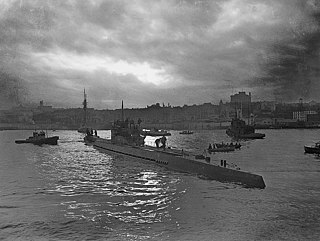
German submarine U-190 was a Type IXC/40 U-boat of Nazi Germany's Kriegsmarine built for service during World War II.
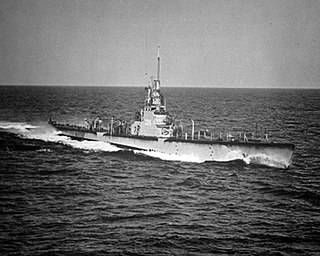
USS Cod (SS/AGSS/IXSS-224) is a Gato-class submarine, the only vessel of the United States Navy to be named for the cod, an important and very popular food fish of the North Atlantic and North Pacific oceans. She was launched on 21 March 1943, and commissioned on 21 June 1943.

USS Bonefish (SS-223) was a Gato-class submarine, the first United States Navy ship to be named for the bonefish.

USS Harder (SS-257), a Gato-class submarine, was the first ship of the United States Navy to be named for the Harder, a fish of the mullet family found off South Africa. One of the most famous submarines of World War II, she received the Presidential Unit Citation. Her commanding officer throughout her service, the resolute and resourceful Commander Samuel D. Dealey (1906–1944), "a submariner's submariner", was posthumously awarded the Medal of Honor, as well as four Navy Crosses during his lifetime.
I-25 (イ-25) was a B1 type (I-15-class) submarine of the Imperial Japanese Navy that served in World War II, took part in the Attack on Pearl Harbor, and was the only Axis submarine to carry out aerial bombing on the continental United States in World War II, during the so-called Lookout Air Raids, and the shelling of Fort Stevens, both attacks occurring in the state of Oregon.

USS Drum (SS-228) is a Gato-class submarine of the United States Navy, the first Navy ship named after the drum, a type of fish. Drum is a museum ship in Mobile, Alabama, at Battleship Memorial Park.

The first USS Batfish (SS/AGSS-310) is a Balao-class submarine, known primarily for the remarkable feat of sinking three Imperial Japanese Navy submarines in a 76-hour period, in February 1945. USS Batfish is the first vessel of the United States Navy to be named for the batfish, a type of anglerfish that crawls about on the sea floor.

USS Guitarro (SS-363), a Gato-class submarine, was the first ship of the United States Navy to be named for the guitarro.
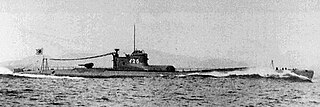
The Type B1 submarine, also called I-15-class submarine was the first group of boats of the Type B cruiser submarines built for the Imperial Japanese Navy (IJN) during the 1940s. In total 20 were built, starting with I-15, which gave the series their alternative name.

I-26 was an Imperial Japanese Navy B1 type submarine commissioned in 1941. She saw service in the Pacific War theatre of World War II, patrolling off the West Coast of Canada and the United States, the east coast of Australia, and Fiji and in the Indian Ocean and taking part in Operation K, preparatory operations for the Aleutian Islands campaign, and the Guadalcanal campaign, the Marianas campaign, and the Battle of Leyte Gulf. She was the first Japanese submarine to sink an American merchant ship in the war, sank the first ship lost off the coast of State of Washington during the war, damaged the aircraft carrier USS Saratoga (CV-3), sank the light cruiser USS Juneau (CLAA-52), and was the third-highest-scoring Japanese submarine of World War II in terms of shipping tonnage sunk. Her bombardment of Vancouver Island in 1942 was the first foreign attack on Canadian soil since 1870. In 1944, I-26′s crew committed war crimes in attacking the survivors of a ship she sank. She was sunk in November 1944 during her ninth war patrol.
I-21 was a Japanese Type B1 submarine which saw service during World War II in the Imperial Japanese Navy. She displaced 1,950 tons and had a speed of 24 knots (44 km/h). I-21 was the most successful Japanese submarine to operate in Australian waters, participating in the attack on Sydney Harbour in 1942 and sinking 44,000 tons of Allied shipping during her two deployments off the east coast of Australia.
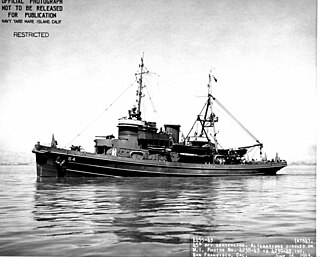
USS Navajo (AT-64) was an oceangoing tugboat in the United States Navy, and the lead ship of her class. She was named for the Navajo people. Originally called the Navajo-class of fleet tugs, they were later renamed the Cherokee-class after loss of the first two ships of the class.

The Battle of the Caribbean refers to a naval campaign waged during World War II that was part of the Battle of the Atlantic, from 1941 to 1945. German U-boats and Italian submarines attempted to disrupt the Allied supply of oil and other material. They sank shipping in the Caribbean Sea and the Gulf of Mexico and attacked coastal targets in the Antilles. Improved Allied anti-submarine warfare eventually drove the Axis submarines out of the Caribbean region.

HMCS Quesnel was a Flower-class corvette of the Royal Canadian Navy that took part in convoy escort duties during the Second World War. She primarily saw service in the Battle of the Atlantic. She was named after Quesnel, British Columbia.
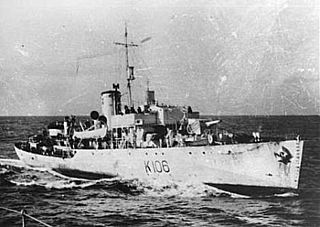
HMCS Edmundston was a Flower-class corvette that served with the Royal Canadian Navy during the Second World War. She served primarily in the Battle of the Atlantic as a convoy escort. She was named for Edmundston, New Brunswick.
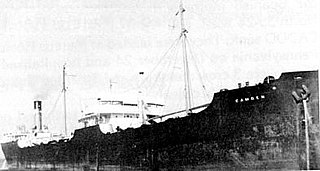
SS Camden was an American 6,653-ton tanker built by the New York Shipbuilding Company of Camden, New Jersey, for the Charles Kurz & Co. Inc. of Pennsylvania Shipping Company. She was operated by Shell Oil Company of Wilmington, Delaware. She was launched in 1921. The ship became famous when it was torpedoed early in World War II off the West Coast of the United States off Coos Bay, Oregon, at 43.38 N, –124.48 W at 7:00 am. She had departed San Pedro, Los Angeles, California, to Portland, Oregon, with fuel oil. The ship was attacked by Japanese submarine I-25 on October 4, 1942 off Oregon. She had been stopped for engine repairs at the time of the attack. She survived the attack, but later sank on October 10. One Crew member died and went down with the ship. The Camden was set on fire by the torpedo hit to her bow and was sinking. The crew abandoned ship and was rescued by a Swedish merchant ship, the MV Kookaburra. The Camden still on fire remained afloat. The tugboat Kenai was towing her to Astoria, Oregon, but then changed the path to Seattle, but the Camden sank off the coast of Washington state at 46.7772, -124.5208 and now rests at a depth of 312 feet.
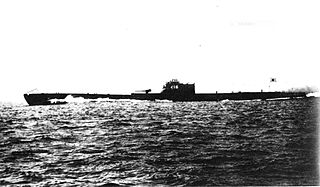
I-16 was one of five Type C cruiser submarines of the C1 sub-class built for the Imperial Japanese Navy, Commissioned in 1940, she deployed a midget submarine for the attack on Pearl Harbor and for an attack on ships at Diego-Suarez in Madagascar, conducted an anti-shipping patrol in the Indian Ocean, and took part in the Guadalcanal campaign, New Guinea campaign, and Bougainville campaign before she was sunk in May 1944.

SS Barbara Olson was a cargo ship built in Wisconsin in 1918 as the SS Corrales. Barbara Olson was able to escape an attack off the coast of California in the early days of World War II. The Barbara Olson was built under a United States Shipping Board (USSB) contract in 1918 as the SS Corrales and renamed in 1940. On July 25, 1942, she was chartered by the US Army to transport supplies to the Territory of Hawaii as the USAT Barbara Olson for World War II. On January 14, 1946, her Army service ended. In 1964 she was run aground four miles (6.4 km) north of Pimentel, Peru and declared a total loss.
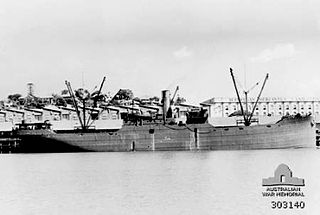
SS Coast Trader was built as the cargo ship SS Holyoke Bridge in 1920 by the Submarine Boat Company in Newark, New Jersey. The Coast Trader was torpedoed and sank 35 nautical miles southwest of Cape Flattery, off the Strait of Juan de Fuca in U.S. state of Washington by the Japanese submarine I-26. Survivors were rescued by schooner Virginia I and HMCS Edmundston. She rests on the ocean floor at.
















